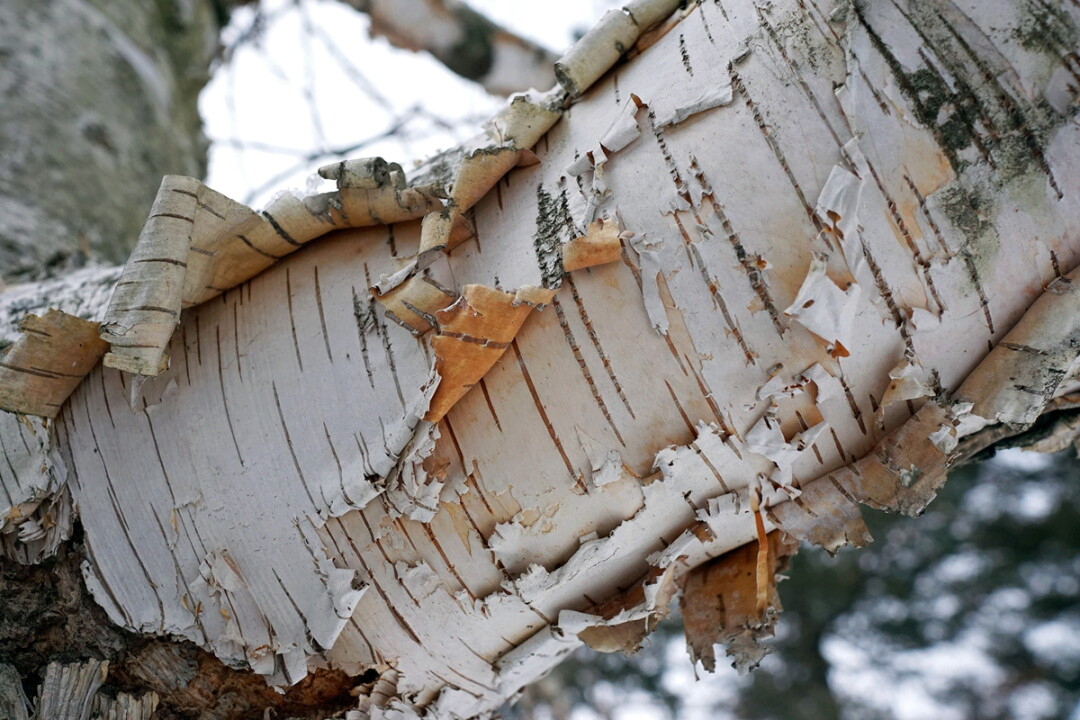Why Does Birch Tree Bark Peel Off?

Birch bark can be so tempting to peeeel off. But wait! Is that a good idea? Why is the bark coming off, anyway? Is the birch sick?
Let’s look at the layers of a tree. Bark is made of two layers, outer and inner bark. Outer bark is dead, but the inner bark is living. It carries food throughout the tree.
Under inner bark is cambium, which is the growing layer. Each spring, leaf buds send hormones to cambium, telling it to make new wood. So trees grow outward from the inside.
Unless a tree grows very slowly, the rigid outer bark can’t stretch. As trees grow fatter, bark has to give somehow. In oaks, the outer bark splits and cracks, giving it a rough texture. However, insects really like to burrow in those grooves, so oaks produce tannins to make the tree taste bad.
Other trees, like birches, have smooth bark that doesn’t split. This bark sloughs off as the tree expands, a little like how snakes shed their skins. Smooth barks have their advantages. Insects have a hard time burrowing into smooth bark. Also, as bark peels off, it gets rid of moss and lichen that thrive in the same damp environments as birch trees.
Outer bark has an important job: protecting the tree. If bark is very loose, that means the tree is done with that section, and it’s safe to peel it off. However, don’t remove bark that’s still firmly attached to the tree because the tree still needs that bark. Removing it may harm the inner bark and cambium. The wood beneath that peeled section may turn black, and the tree will get sick or even die.
To keep our birches healthy, it is best to wait for that beautiful bark to fall off on its own.






















